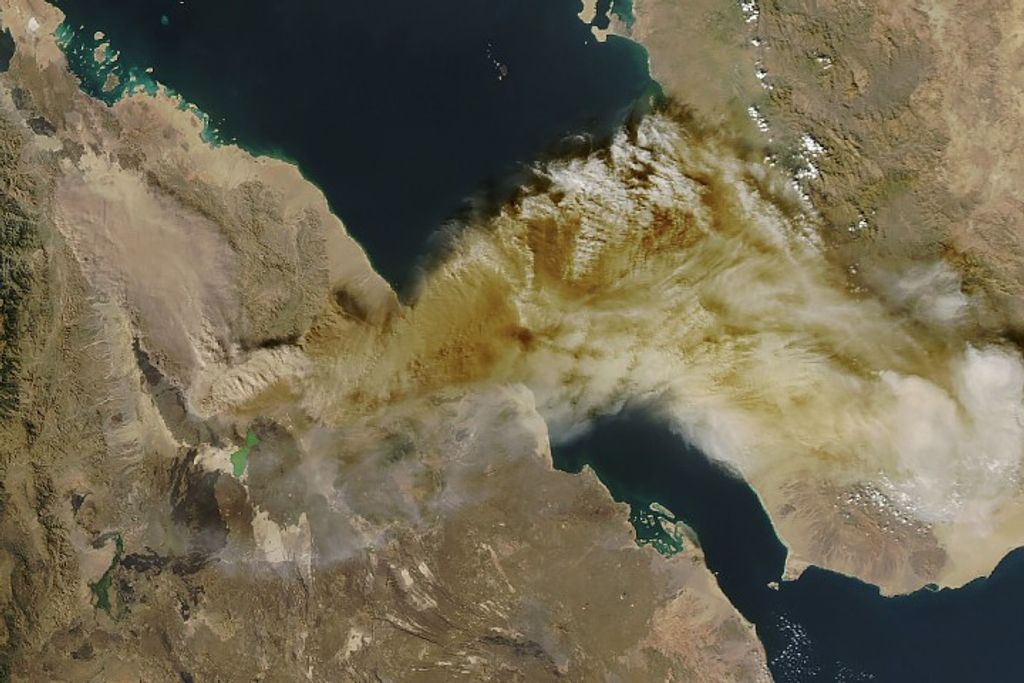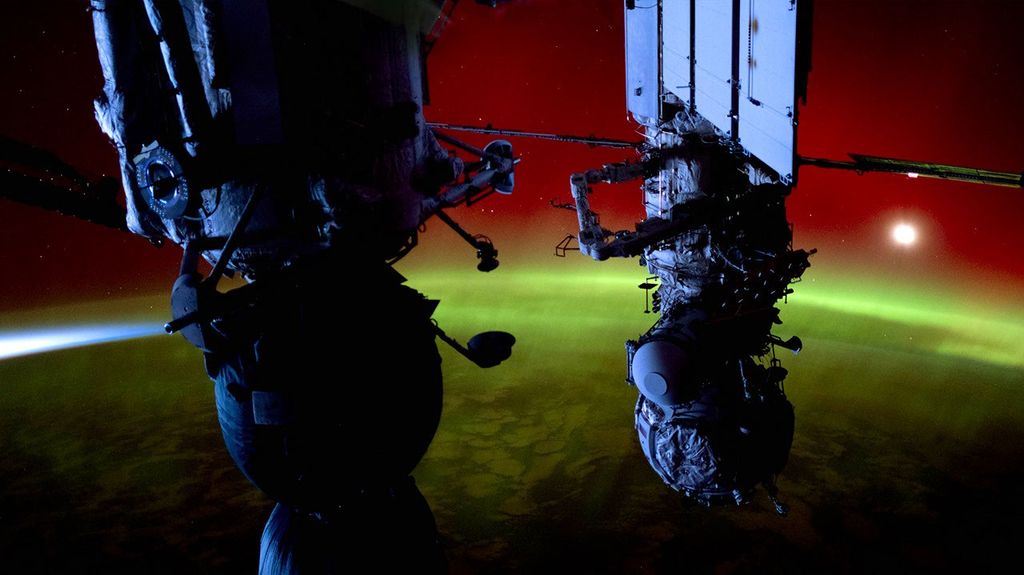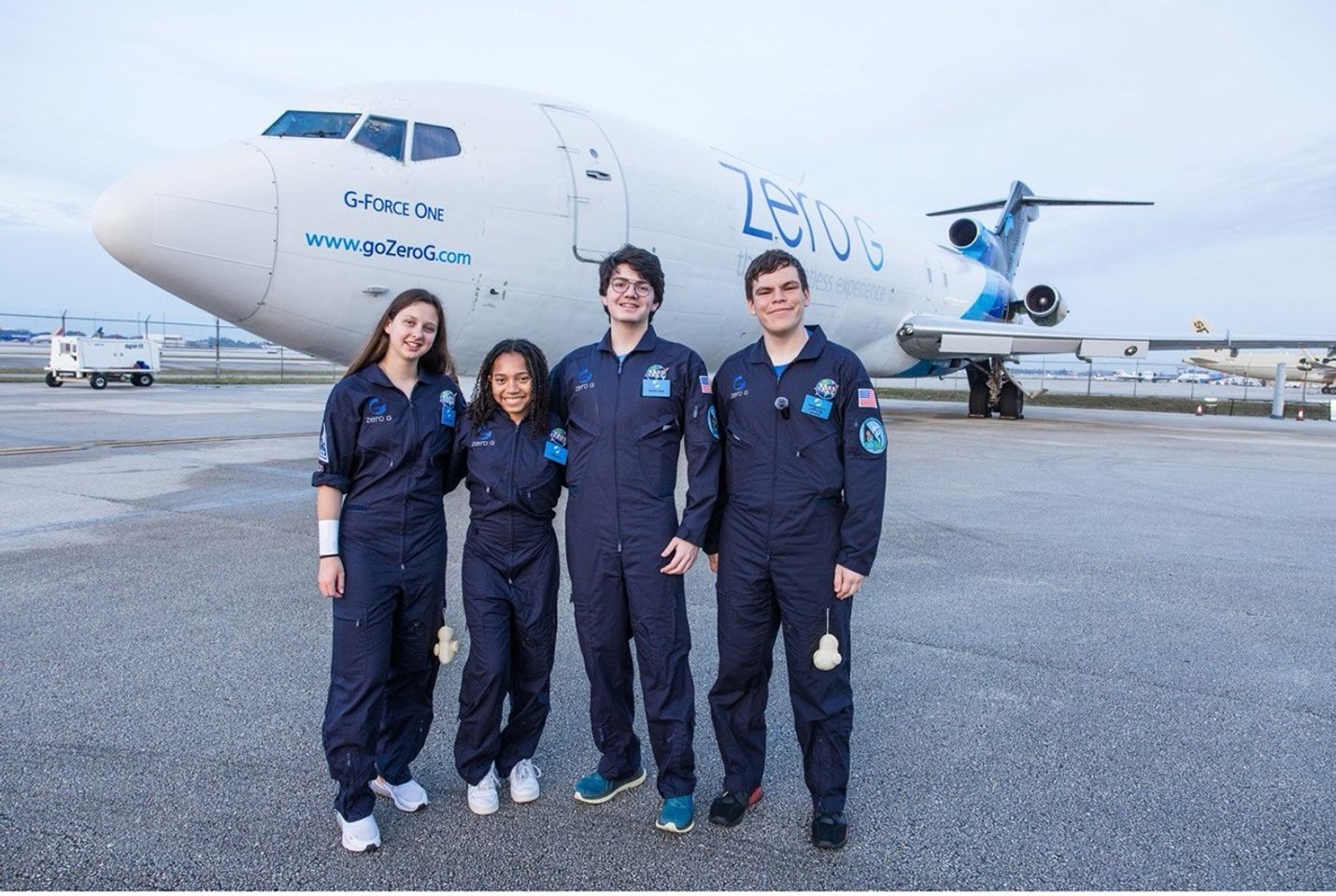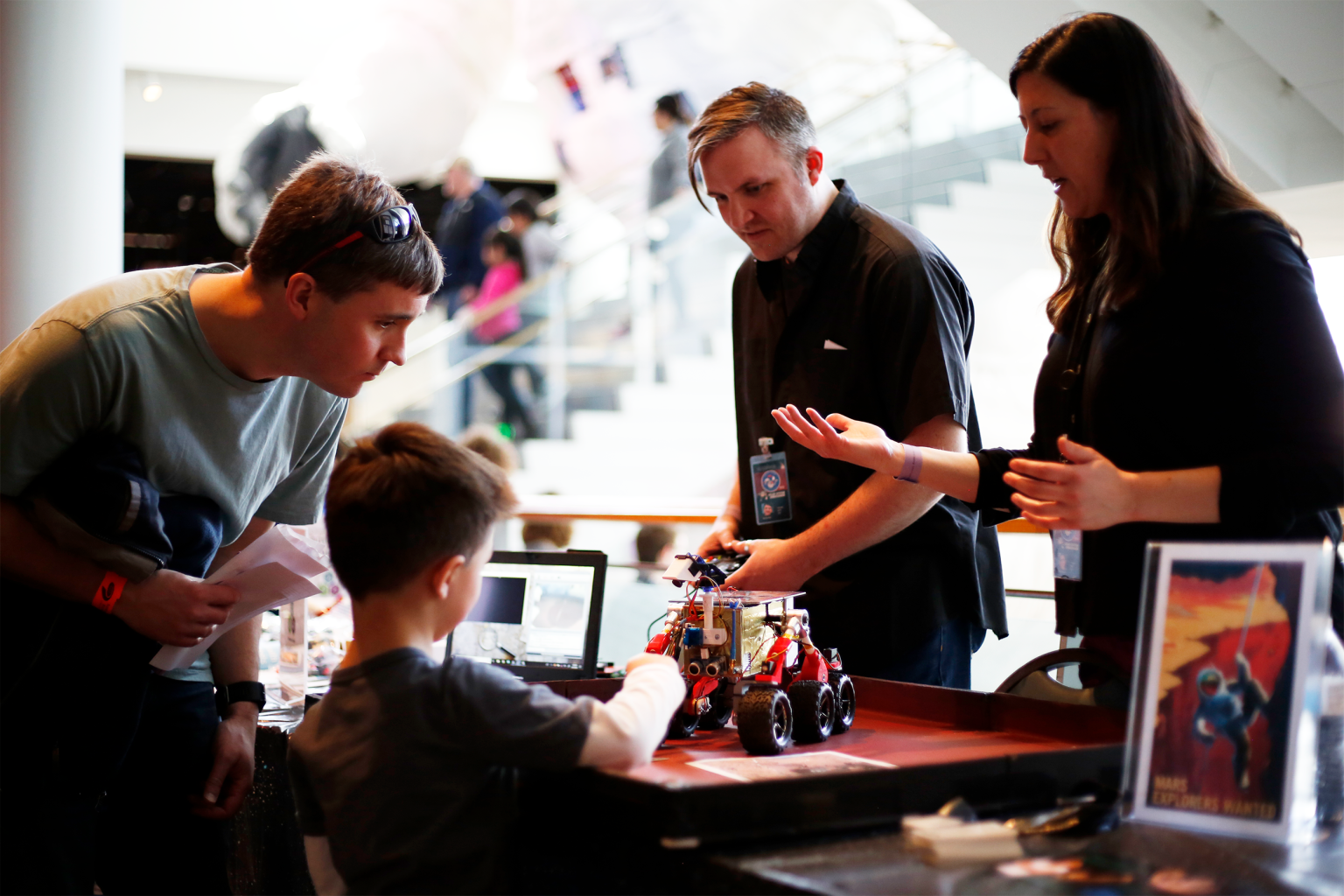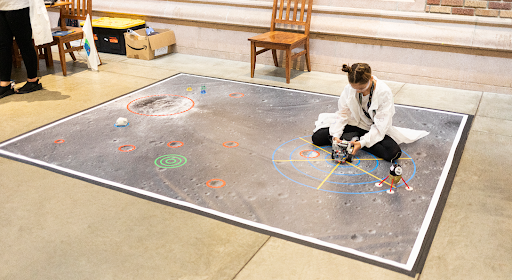NASA Earth Science Education Collaborative
Enhancing STEM teaching/learning by creating engaging, meaningful STEM experiences.
Team Mission
The NASA Earth Science Education Collaborative (NESEC) goal is to enable broad participation in authentic NASA Earth STEM experiences for lifelong learners.
NESEC is led by the Institute for Global Environmental Strategies (IGES) in strong partnership with the world-renowned Earth sciences organizations at NASA’s Goddard Space Flight Center (GSFC), Jet Propulsion Laboratory (JPL), and Langley Research Center (LaRC).
Technology as a tool is incredibly motivating. Having NASA as a learning partner is also a strong motivator. My students rotate through their science investigation teams daily to make sure their cloud and contrail observations are completed with accuracy and that NASA receives the data in a timely manner.

Dr. Caryn Long
Treadway Elementary School, FL
What does your team hope to achieve?
NESEC delivers meaningful and authentic STEM experiences and resources that 1) are based on NASA Earth science; 2) are tailored to specific audiences based on their needs; 3) as a whole, reach diverse learners throughout their lifetimes; and that are 4) delivered broadly through strategic partnerships.
The NESEC team designs experiences and resources for learners of all ages – from children to adults - in formal and out-of-school settings. These range from short-term experiences that can increase awareness of and spark interest in NASA Earth STEM, to longer-term experiences and learner-defined research projects that can impact a learner’s science identity and career path.
NESEC activities focus on three areas:
- GLOBE Observer citizen science, expanding the international GLOBE Program to out-of-school audiences (informal education and individual citizen scientists) through a free mobile app and supporting resources and experiences. GLOBE Observer currently includes four tools that enable citizen scientists to participate in NASA science: Clouds, Mosquito Habitat Mapper, Land Cover, and Trees. It also includes a temporary Eclipse tool that is opened when there is a total solar eclipse, including the 2017 total solar eclipse across North America, the 2019 and 2020 total eclipse in South America, and the April 2024 total solar eclipse in North America.
- Science Investigations with NASA, creating opportunities for authentic science engagement with NASA science, data, and subject matter experts. These include student research, field campaigns, data challenges, and learner-center activities: GLOBE Clouds with Satellite comparison, U.S. Air Quality; Trees Around the GLOBE; GLOBE Mission Mosquito, SEES Earth System Explorers and GLOBE Goes to Camp.
- Strategic Partnerships. Reach broad, audiences across the United States through strategic partnerships and collaborations with a wide range of organizations including Civil Air Patrol, GLOBE Program, SciStarter/Girl Scouts, Smithsonian Institution, American Camp Association, Odyssey of the Mind, Polar Citizen Science Collective, Osher Lifelong Learning Institutes, and local partnerships with libraries, master gardeners, camps, universities, and others.
By engaging in hands-on data collection, our cadets and senior members directly support advancements in aviation safety and weather research. It’s an exciting time for CAP and aerospace education's future.

Capt. Shannon Babb
Mission Director, Civil Air Patrol 2025 Aviation Weather Mission
I told them when they were taking observations, if anyone asked them what they were doing to say, “I am a Citizen Scientist and I work for NASA. I am collecting weather data.” One little boy really got excited about that and I heard him tell his mom he was working for NASA as they were leaving. I forwarded the NASA satellite response to the afterschool coordinator with a note from me and she read it to them yesterday afternoon. That really excited them because it was evidence this is the real deal.

Cheri Grinnell
Children’s Librarian, Oldham Public Library
The accessibility, collaborative spirit, excellent mentorship, and integrated research experience…has made it one of the most formative and rewarding experiences of my high school years.

Matteo Kimura
Former NESEC Earth System Explorer intern and peer mentor
Project Web Site
Publications
A full list of NESEC publications is at: https://nesec.strategies.org/publications/
Autore, A. M., Dodson, J. B., Duda, D. P., Robles, M. C., Weaver, K. L., Taylor, J. E., Rogerson, T. M., & Kohl, H. (2025). GLOBE Eclipse 2024: A Case Study of the Effects of the April 2024 Total Solar Eclipse on Cirrus Clouds and Contrails in the United States of America. Bulletin of the AAS, 56(9). https://doi.org/10.3847/25c2cfeb.d9ddc39b
Nelson, P. V., Low, R., Kohl, H., Overoye, D., Yang, D., Huang, X., Chellappan, S., Azam, F. B., Carney, R.M., Falk, M., Garriga, J., Schelkin, L., Boger, R., Schwerin, T. (2024). GLOBE Observer: A Case Study in Advancing Earth System Knowledge with AI-Powered Citizen Science. Citizen Science: Theory and Practice, 9(1), 33. https://doi.org/10.5334/cstp.747
Patil, Y., Fathima, R., Campbell, B., Janney, D., Hudnurkar, S., R, H. (2024). Review of earth observation techniques and citizen science approach for biodiversity hotspot study. International Journal of Environmental Impacts, Vol. 7, No. 4, pp. 753-767. https://doi.org/10.18280/ijei.070416
Edson, LB, MacDonald, E, Cawood, A and Fischer, H. (2024). Practical Applications of a Participatory Science Project Evaluation Tool: Perspectives from Across Earth and Space Science. Citizen Science: Theory and Practice, 9(1): 10, pp. 1–11. DOI: https://doi.org/10.5334/cstp.536
Agrawal, N., Nelson, P.V., and Low, R.D. (2023) "A Novel Approach for Predicting Large Wildfires Using Machine Learning towards Environmental Justice via Environmental Remote Sensing and Atmospheric Reanalysis Data across the United States" Remote Sensing 15, no. 23: 5501. https://doi.org/10.3390/rs15235501
Carney, RM, Long, A, Low, RD, Zohdy, S, Palmer, JRB, Elias, P, Bartumeus, F, Njoroge, L, Muniafu, M, Uelmen, JA, Rahola, N and Chellappan, S. (2023). Citizen Science as an Approach for Responding to the Threat of Anopheles stephensi in Africa. Citizen Science: Theory and Practice, 8(1): 60, pp. 1–15. DOI: https://doi.org/10.5334/cstp.616
Uelmen, J.A., Clark, A., Palmer, J. Kohler, J., Van Dyke, L.C., Low, R.D., Mapes, C.D., and Carney, R.M. (2023) Global mosquito observations dashboard (GMOD): creating a user-friendly web interface fueled by citizen science to monitor invasive and vector mosquitoes. Int J Health Geogr 22, 28. https://doi.org/10.1186/s12942-023-00350-7
Dodson, J. B., Robles, M. C., Rogerson, T. M., & Taylor, J. E. (2022). Do citizen science Intense Observation Periods increase data usability? A deep dive of the NASA GLOBE Clouds data set with satellite comparisons. Earth and Space Science, 9, e2021EA002058. https://doi.org/10.1029/2021EA002058
Enterkine, J., Campbell, B., Kohl, H., Glenn, N., Weaver, K., Overoye, D., and Danke, D. (2022) The potential of citizen science data to complement satellite and airborne lidar tree height measurements: lessons from The GLOBE Program. Environ Res. Lett., 17(7). https://iopscience.iop.org/article/10.1088/1748-9326/ac77a2









